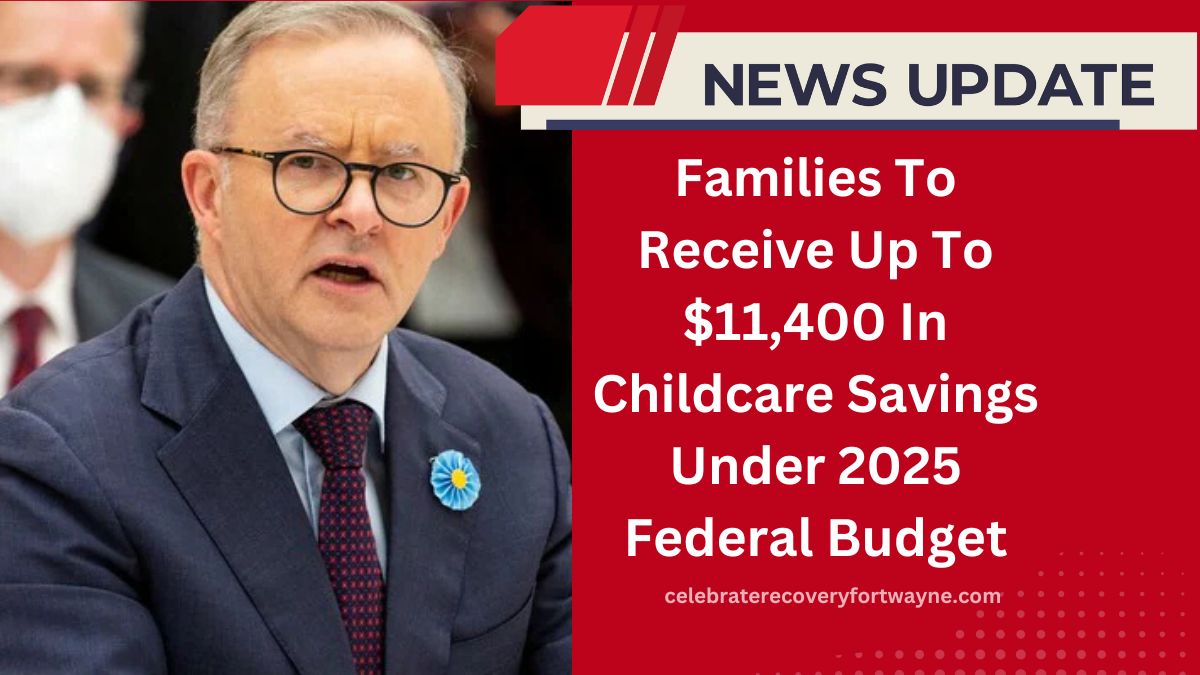The 2025 Federal Budget brings a significant win for Australian families, offering up to $11,400 in annual childcare savings through sweeping changes to the childcare subsidy system.
Effective January 1, 2026, this policy is designed to provide relief amid rising living costs and marks a major step toward universal early childhood education access.
Key Change: Removal of the Activity Test
The cornerstone of the reform is the removal of the activity test, which previously required parents to work, study, or volunteer for a minimum of 16 hours per fortnight to qualify for 72 hours of subsidised childcare.
With this test scrapped, all families earning under $533,280 annually will now be guaranteed 3 days (or 72 hours) of subsidised care per fortnight, regardless of work or study status.
This change opens access for thousands of families who previously did not meet the criteria, particularly stay-at-home parents, part-time workers, or those in casual employment.
Who Will Benefit?
According to government projections, around 66,700 families will benefit from the new three-day guarantee in the first year alone. In addition, over 100,000 families will gain access to extra hours of subsidised care.
However, families earning above $533,280 annually remain ineligible for subsidised childcare, keeping in line with previous income cap rules.
Potential Childcare Savings Breakdown
Here’s a breakdown of projected childcare savings based on income levels for families using childcare three days per week over 50 weeks:
| Annual Income | Weekly Savings | Annual Savings |
|---|---|---|
| $90,000 | $230 | $11,400 |
| $120,000 | $220 | $10,630 |
| $140,000 | $200 | $10,110 |
These savings reflect average centre-based day care rates and showcase the significant financial impact the reform will have on mid-income families.
Additional Support Through Universal Education Strategy
Beyond the immediate savings, the government has pledged to build a long-term strategy through the $1 billion Building Early Education Fund.
This initiative aims to increase access to childcare in underserved areas such as outer suburbs and regional communities. If re-elected, the government promises to use the fund to construct new centres and expand services.
This investment complements the federal effort to lay the foundation for a universal early childhood education system in Australia.
Special Considerations and Existing Supports
While the reform expands access to childcare subsidies, families meeting traditional activity requirements can still access up to 100 hours of subsidised care per fortnight.
Additionally, First Nations families will continue to receive 100 hours of subsidised childcare, regardless of work or study status, reflecting a commitment to equity and inclusion in early education.
How Will Families Access the New Subsidy?
The transition to the new system will begin on January 1, 2026. Until then, the existing subsidy structure and activity test remain in place. Eligible families can expect the following:
- No additional paperwork will be needed for families already enrolled in the subsidy program.
- Centrelink will automatically update eligibility and entitlements.
- Childcare providers will inform families of any changes in their billing based on the new policy.
The 2025 Federal Budget’s childcare reform represents a major shift in family policy, delivering meaningful financial relief to thousands of households and addressing the pressing issue of childcare affordability.
With up to $11,400 in yearly savings, the reform supports working families, enhances access to early education, and reflects a long-term commitment to economic inclusion and gender equality.
FAQs
When does the new childcare subsidy reform take effect?
The policy will be implemented starting January 1, 2026.
Do both parents need to work to receive the subsidy under the new rules?
No. The activity test is being removed, so work or study is no longer a requirement.
Are high-income families eligible for the new subsidy?
Families earning above $533,280 annually are not eligible, as per current and continuing income caps.
